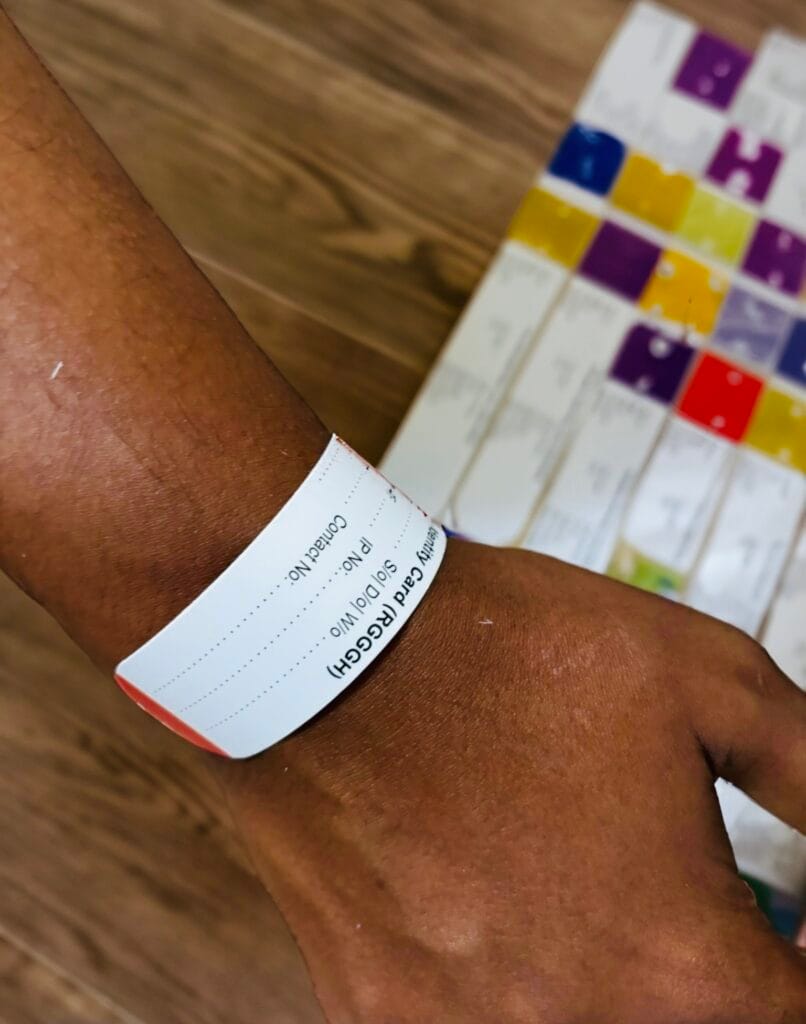Why Person Recognition Bands Are Crucial for Every Medical Care Facility
In the complicated landscape of health care, individual recognition bands offer as a foundational component in securing patient safety and security and reducing clinical mistakes. These bands provide important details that not just helps with exact identification yet also boosts communication among healthcare providers. As institutions aim to fulfill regulatory compliance and boost overall workflow efficiency, the function of identification bands becomes increasingly substantial. The effects of their usage expand beyond simple conformity-- what are the prospective effects of overlooking this vital practice? Exploring this question discloses a much deeper understanding of client security and high quality care.
Averting Medical Errors
In the realm of medical care, stopping clinical errors is paramount to guaranteeing person safety and top quality of treatment. One of one of the most important consider reducing such errors is the exact identification of people. Misidentification can lead to inappropriate therapies, drug errors, and also surgical mistakes, every one of which can have disastrous repercussions for patients and doctor alike.
Person identification bands work as an essential device in this preventative method. These bands generally contain necessary information, such as the individual's name, day of birth, and distinct recognition number, permitting health care experts to validate the patient's identification quickly and properly before carrying out any care. Ensuring that these bands are properly applied and consistently made use of across all healthcare settings is important.
Moreover, the implementation of electronic health and wellness records (EHR) can enhance the efficiency of individual recognition bands by incorporating them with electronic systems that flag potential discrepancies. Regular training and adherence to procedures relating to using person identification bands can considerably minimize the probability of mistakes. In summary, robust individual recognition techniques are essential for decreasing clinical errors and safeguarding individual well-being within medical care atmospheres.
Enhancing Individual Safety And Security
Person security is a diverse concept that encompasses numerous methods and methods created to protect people from damage throughout their health care experience. One crucial component in boosting individual security is the implementation of person recognition bands. These bands function as a crucial tool for making sure that healthcare companies can accurately identify people, hence decreasing the threat of misidentification.
The existence of client identification bands considerably reduces the opportunities of administering wrong medicines, performing unexpected treatments, or stopping working to recognize allergic reactions. By attaching an one-of-a-kind identifier to each person, healthcare facilities develop a trusted system that fosters liability and alertness amongst clinical personnel. This aggressive approach not just improves the security of people but likewise imparts a sense of count on the healthcare system.
Additionally, client identification bands add to a standard protocol that can be easily integrated right into electronic wellness records. Patient Identification Band. This assimilation makes certain that crucial client details is conveniently accessible, further strengthening safety procedures. Inevitably, the efficient use recognition bands is a necessary practice that underpins a culture of security, intending to shield individuals and improve total medical care outcomes
Improving Interaction
Effective communication is crucial in the healthcare setup, as it straight influences patient safety and care quality. Client identification bands function as an important device for boosting interaction among doctor. By plainly showing crucial person information such as name, day of birth, and clinical document number, these bands promote precise recognition, reducing the risk Click This Link of errors in therapy and drug administration.
Additionally, client identification bands promote a culture of accountability and confirmation within health care teams. When all team member are geared up with immediate access to reputable client identification, the chance of miscommunication reduces substantially. For instance, throughout handoffs between shifts or interdisciplinary consultations, the visibility of identification bands makes sure that everybody entailed gets on the exact same web page regarding individual identification and case history, consequently decreasing misunderstandings.
Furthermore, these bands can incorporate with digital health records (EHR), enabling seamless interaction of patient information across numerous platforms. This connectivity not just boosts the effectiveness of info sharing however additionally supports a much more collaborated strategy to client care. Eventually, the fostering of person recognition bands is vital for enhancing interaction, thus adding to far better health outcomes and making certain that patients obtain the highest possible standard of care.

Streamlining Operations
The implementation of patient recognition bands dramatically adds to improving process within healthcare settings. By giving prompt and clear identification of clients, these bands minimize the moment healthcare experts invest verifying person information. This performance minimizes the capacity for mistakes, enabling team to concentrate on direct individual treatment as opposed to administrative tasks.
With standard identification processes, medical care teams can swiftly access vital person data, including medical background, allergic reactions, and therapy plans. This fast accessibility enhances decision-making and enables timely treatments, inevitably boosting person outcomes. Furthermore, the use of identification bands assists in far better control among multidisciplinary groups, guaranteeing that all members have the correct information at their fingertips.

On top of that, client identification bands can be integrated with electronic wellness record (EHR) systems, better enhancing workflow. By scanning a band, medical care providers can swiftly update and share info, therefore decreasing redundancy and enhancing paperwork initiatives. This assimilation helps preserve a constant circulation of you can try here information, which is critical in dynamic health care setups.
Ensuring Regulatory Conformity
In today's healthcare landscape, making certain regulatory compliance is paramount for preserving individual safety and security and business integrity. Person recognition bands play a critical duty in conference various governing standards, such as those stated by the Joint Commission and the Centers for Medicare & Medicaid Services (CMS) These companies stress the necessity of exact client recognition to decrease medical errors and boost the high quality of treatment.

Applying standardized client identification bands assists health care centers conform with policies that need precise client identification at every stage of treatment. This includes medication administration, surgeries, and blood transfusions. Non-compliance can result in major effects, consisting of fines, loss of certification, and, most notably, endangering client safety and security.
In addition, making use of modern technology, such as barcoding and RFID systems incorporated with patient recognition bands, can additionally boost compliance efforts by guaranteeing that the right person gets the ideal therapy at the correct time. By focusing on the implementation of durable person identification systems, medical care centers not only adhere to regulatory criteria yet also foster a society of safety and liability, ultimately enhancing client end results and depend on in the medical care system.

Conclusion
To conclude, individual identification bands act as a basic part in health care centers, dramatically adding to the avoidance of medical errors and the improvement of individual safety and security. By improving interaction among medical personnel and enhancing process, these bands assist in much more effective health care shipment. Furthermore, their function in ensuring conformity with regulatory standards can not be overstated. Ultimately, the execution of client recognition bands is vital for fostering a safer medical care environment and improving general client end results.
In the complicated landscape of healthcare, client identification bands serve as a foundational element in guarding individual security and lessening medical mistakes. These bands typically contain necessary info, such as the client's name, date of birth, and one-of-a-kind recognition number, permitting medical care specialists to confirm the person's identity swiftly and precisely before providing any care.Applying standard client identification bands aids healthcare centers conform with guidelines that require specific client recognition at every stage of care.In conclusion, client identification bands serve as an essential element in health care centers, considerably contributing to the avoidance of clinical mistakes and the improvement of individual safety - Patient Identification Band. Continued Ultimately, the implementation of patient recognition bands is necessary for promoting a safer medical care atmosphere and enhancing total person results